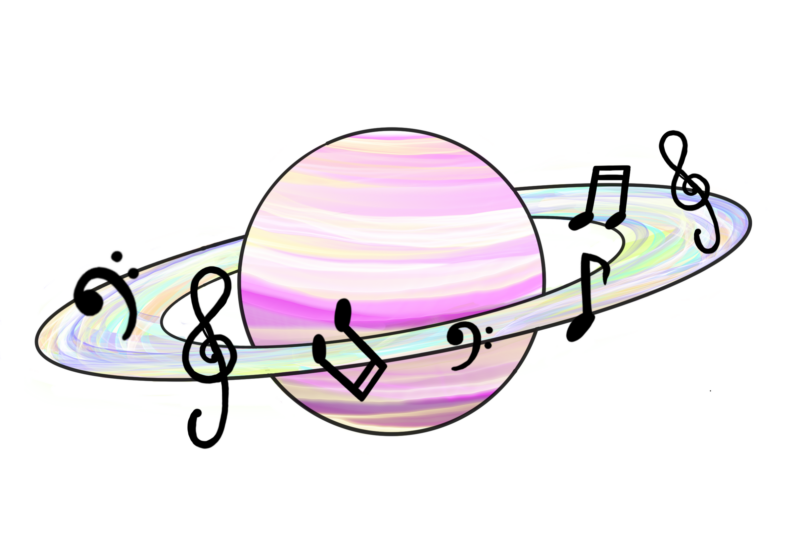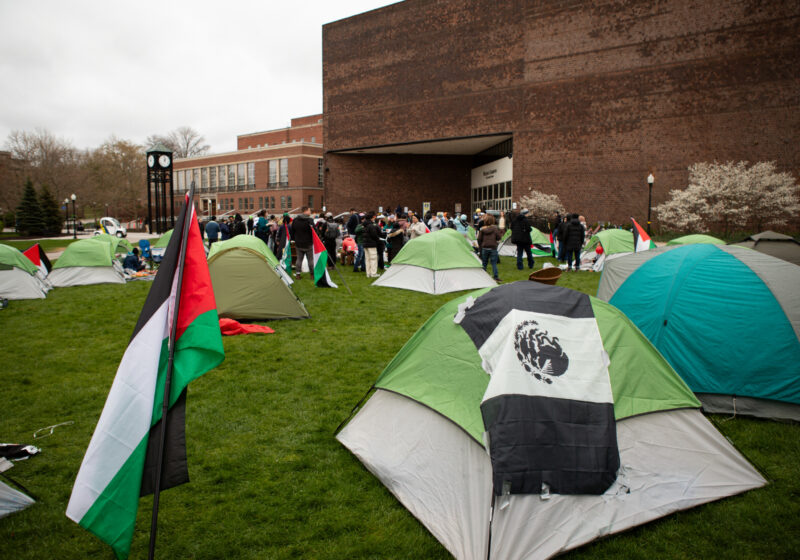In the beginning, there was nothing.
The vastness of an unborn galaxy marked by the absence of sound, light, and substance. Empty music stands on an empty stage.
Then the universe began to form, colors and shapes began to dance across what we would soon come to call the sky, the stars, and the planets. Sounds of an orchestra began to play, colorful and clean. The conductor took his stand. It then became clear how the murals and decorum that lined the walls echoed to please the ear as much as they did the eye.
Gustav Holst’s “The Planets, Op. 32,” to put simply, is a magical piece of music. Written between 1914 and 1916, the suite has built a strong legacy, and the orchestra’s rendition truly emphasized why. The performance begins the second leg of the Rochester Philharmonic Orchestra’s (RPO’s) 2023-2024 Centennial Season, as well as conductor Peter Bay’s return to the stage after his time conducting the group from 1987 to 2014.
As explained by Bay during the pre-concert discussion, Holst found inspiration for his suite from a topic that has twisted and captivated the human mind for centuries — astrology. Whether or not you subscribe to a daily horoscope, it cannot be argued how deeply our perception of the planets has shaped our aesthetics and culture — and Holst takes full creative liberty with this notion.
The performance began with DeBussy’s “Three Nocturnes” — an ethereal trio akin to “The Planets” through its entrance of a woman’s chorus (Rochester’s Concertus Chorus) in the final movement. Coupling with its vivid imagery — described during the pre-concert talk as that of water and shades of gray — Bay selected the piece with utmost intent. The movement begins softly, building into melodies that sweep across the orchestra and echo in each line. While “Clouds” blends a solemn tone with that of soothing eternality, “Festivals” follows with blooming joviality and brassy confidence. The suite closes with “Sirens,” which features the chorus, with their alluring calls cascading over the ebb and flow of the orchestra itself.
The main event of the evening, to no surprise, proved an excellent journey across the planets that we find so familiar, bringing each to life with persistence and passion. In a world so focused on the digital, it is often easy to forget the power of live performance, particularly that of orchestral music. Yet, the harmonic richness and energy that flowed throughout the hall again proved the power of this art form and how entrancing collective sound can be. The musical performance was paired with NASA imagery of the planets themselves, smoothly meshing Holst’s imaginative depictions with that of scientific innovation not possible at the time of its synthesis.
While each movement proved spectacular, the highlights of the performance often aligned with moments of intensity. Bay said his favorite sections to conduct were the beginning (“Mars, the Bringer of War”) and end (“Neptune, the Mystic”), and the heavy dramatism of both makes for a spectacular playing and listening experience. “Mars” in particular, when paired with the flashing reds of the celestial body and depictions of rovers navigating the vast surface feels almost “Star Wars”-esque — minus all of the blasters. As John Williams found inspiration from Holst’s suite for his compositions for the film, it is a fun tie-in that further links these cultural mainstays.
“Mercury, the Winged Messenger” moved with a mesmerizing quickness that showcased the orchestra’s finesse, its lightness complimenting an almost holographic portrait of the planet that danced across the screen. Following shortly after, “Jupiter, the Bringer of Jollity” was quick to live up to its name with a triumphant confidence. One of the most well-known movements of “The Planets” suite, “Jupiter’s” melodies paraded into a climax of the piece and soared through a majestic glimpse of the gas giant’s humongous heart.
The suite closes with “Neptune, the Mystic,” a shimmering flutter of luscious blue. The piece’s magic is found both in its elegance and the artists who form it, once again featuring Rochester’s Concertus Women’s Chorus. The collective spins to an entrancing close which the chorus leads to the ends of the movement, dangling the piece over the edges of the galaxy. The audience, in turn, leaves with awe, intrigue, and a heavier resonance with the distant planets that we find so familiar.
RPO’s Centennial Season will continue until June, featuring Kodak Hall performances of “Rhapsody in Blue” and “Ode to Joy.” Additional information, as well as tickets, can be found on their website.


